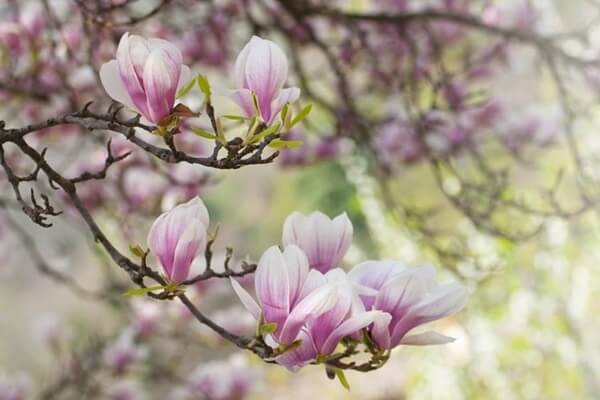Can Magnolias be grown in large pots or containers? Yes, if you don’t have enough space in your garden or live in a climate unsuitable for traditional planting, don’t worry! Container gardening offers a fantastic solution. In this article, we will provide all the info you need to know about growing magnolias in containers, allowing you to bring their grandeur right to your doorstep.
Little Description of Magnolias
Magnolias are best known for their elegant beauty and captivating fragrance, making them a cherished addition to any garden. These plants flourish at the end of winter, giving a sign that spring isn’t far away. Magnolia blossom either white or pink flowers, from rich magenta through soft rose to the palest blush and snow white. You may also find a few maroon, dark purple, yellow, or cream cultivars too.
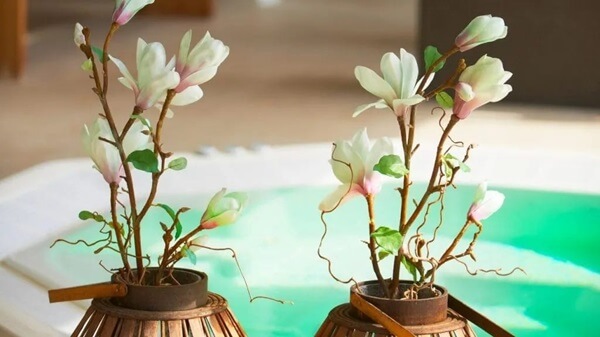
Growing magnolias in containers gives you the privilege to enjoy the beauty of these iconic trees in even the smallest of outdoor spaces. Here are a few steps to grow Magnolias in containers.
Choosing the Right Variety
Well, if you are planning to grow magnolia in a container, then first you have to select the right variety for container cultivation that thrives in your zone by considering the climate in your area, ensuring it can withstand the conditions.
Some of the varieties of Magnolias are,
- Jane Magnolia (Magnolia x ‘Jane’): This hybrid variety produces stunning pink-purple flowers and has a more favorable size, making it suitable for containers on patios or balconies.
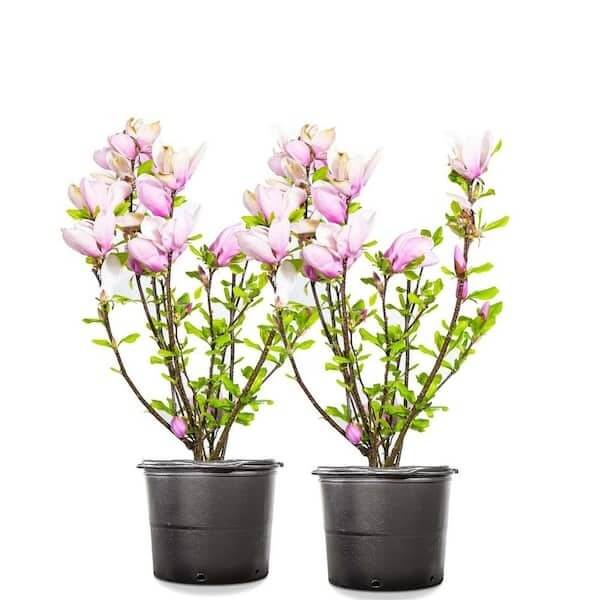
- Ann Magnolia (Magnolia x ‘Ann’): Another hybrid magnolia, Ann, offers vibrant reddish-purple blooms and a compact growth habit, making it well-suited to container cultivation.
- Little Gem Magnolia (Magnolia grandiflora ‘Little Gem’): This hybrid is best Known for its compact size and abundant creamy-white flowers. This variety adds a bright display around your surroundings and is perfect for containers.
- Teddy Bear Magnolia (Magnolia grandiflora ‘Teddy Bear’): Teddy Bear is an excellent choice for container gardening as it has a dense, rounded form and smaller leaves.
Container Selection and Preparation
It is very important to select the right container for the better health and growth of your magnolia tree. It will be wise to select a pot that is at least 2 to 3 times bigger than the original nursery pot. For better ample space for root development, you can use a container with a diameter of at least 24 inches.

It is important to sanitize the container before planting to prevent diseases. Use a high-quality potting mix formulated for woody plants that provide good drainage and retain moisture.
Planting Process
Locating: It is important to locate your container that receives full to partial sunlight. Magnolias thrive in sunlight but also can tolerate some shade, especially in hotter climates.
Planting Depth: Plant the Magnolia by making sure that the root ball sits at the same level as it did in its nursery pot. However, don’t plant too deep, as this can lead to root suffocation.
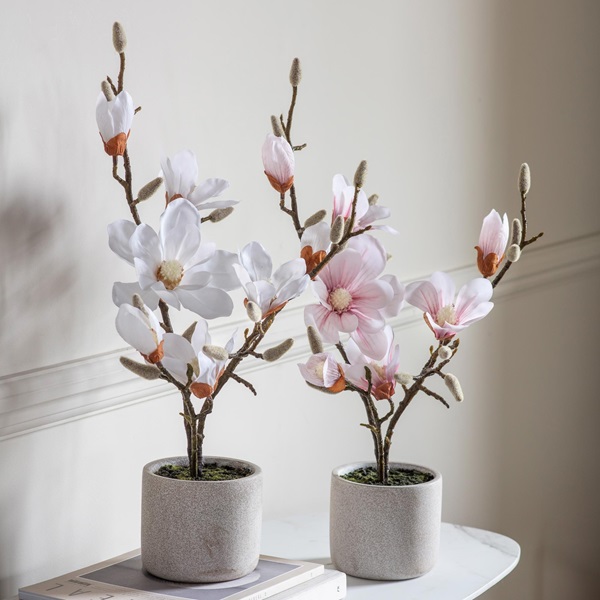
Watering: After planting your magnolia thoroughly, water it to settle the soil and provide moisture to the roots. It is crucial to water your magnolia especially when the top inch of soil feels dry. Make sure to moisture to the roots during its growing season.
Mulching: Applying a layer of organic mulch, like bark chips or compost, around the base of a magnolia tree can be beneficial. It can help to retain soil moisture, which is especially important during dry periods, and also suppress weed growth.
However, it’s important to leave a gap between the mulch and the trunk to prevent moisture-related issues. This will allow the trunk to breathe and prevent any rotting or other damage to the tree.
Care and Maintenance
Well, it is not easy to grow Magnolias in the container. It needs regular care and maintenance to ensure optimal growth and flowering. Here are some essential tips:
Fertilization: Make sure you feed your magnolia tree with a balanced, slow-release fertilizer formulated for acid-loving plants in spring, just before new growth begins. However, excessive fertilization should be avoided as it can lead to rapid but weak growth.
Pruning: Pruning helps to promote a tidy appearance and encourage healthy growth. Remove any dead, damaged, or crossing branches of the Magnolia tree in late winter or early spring.
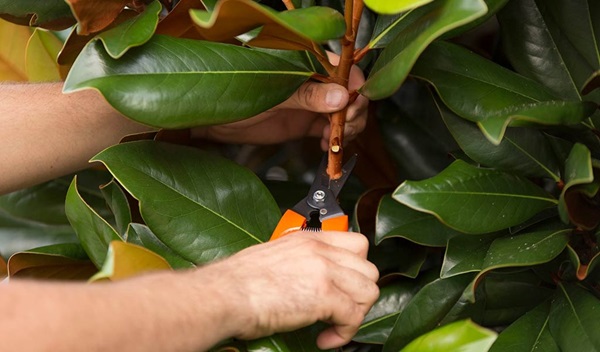
Pest and Disease Management: Common pests such as scale insects and aphids, as well as fungal diseases like powdery mildew are the biggest enemies of your Magnolia which can affect its growth and can even kill your Magnolia. So keep an eye on them.
You can avoid them by using horticultural oil or insecticidal soap and ensuring good air circulation around the plant to prevent fungal issues.
Identifying and resolving common problems with container-grown magnolias:
Even after taking good care, magnolias grown in containers may encounter occasional problems. You can resolve these problems by following some preventive measures such as;
Yellowing Leaves: This kind of problem may arise from overwatering, underwatering, nutrient deficiencies, or root rot. So, you have to adjust your watering practices and ensure the soil drains well. Similarly, apply a balanced fertilizer according to the label instructions if a nutrient deficiency is suspected.
Leaf Scorch: Due to excessive sun exposure or drought stress, your Magnolia leaf can turn brown, crispy leaf edges. To avoid this problem, relocate the container to a slightly shadier location and ensure consistent soil moisture.
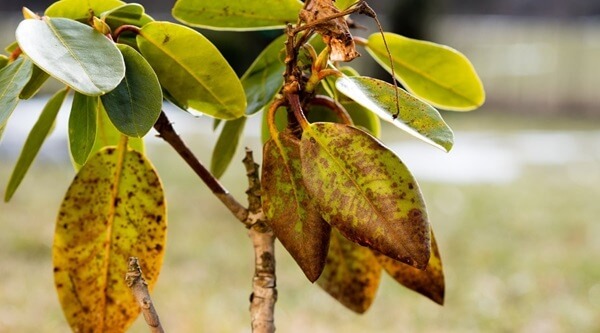
Lack of Flowering: Your magnolia might not bloom if it lacks inadequate sunlight or improper pruning. Make sure, your plant is getting sufficient sunlight and prune as needed to encourage branching and flowering. Young magnolias might take several years to mature and bloom profusely, so stay patient to see its magical blossom.
Frequently Asked Question
1) What types of magnolia can we plant in a container?
Varieties such as Jane Magnolia, Little Gem Magnolia, Teddy Bear Magnolia, and Ann Magnolia are popular choices for container cultivation due to their manageable size and adaptability.
2) How often should I water my magnolia in a container?
Water your magnolia deeply whenever the top inch of the soil feels dry during the growing season. However, avoid excessive watering, as this can lead to root rot, and ensure proper drainage to prevent waterlogging.
3) How can we prevent pests and diseases in my magnolia tree?
You can avoid them by using horticultural oil or insecticidal soap and ensuring good air circulation around the plant to prevent fungal issues.
4) Do magnolia trees in containers need pruning?
Yes, it is important to prune your magnolia to promote a tidy appearance and encourage healthy growth. Remove any dead, damaged, or crossing branches of the Magnolia tree in late winter or early spring.
Also, Read 6 Common Indoor Plants Care Mistakes You’re Making, And Tips to Avoid Them
